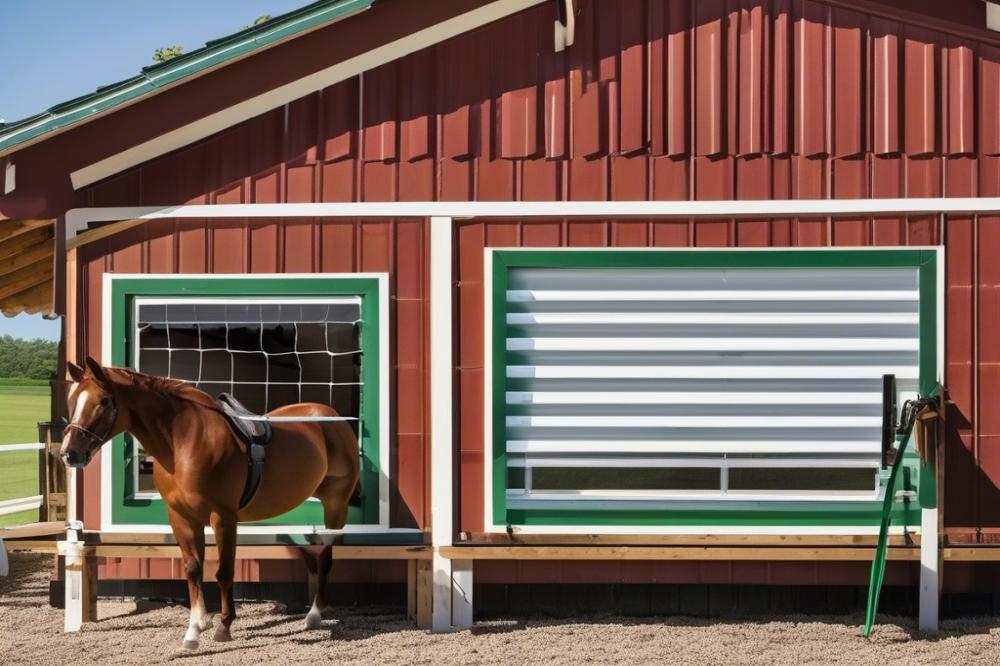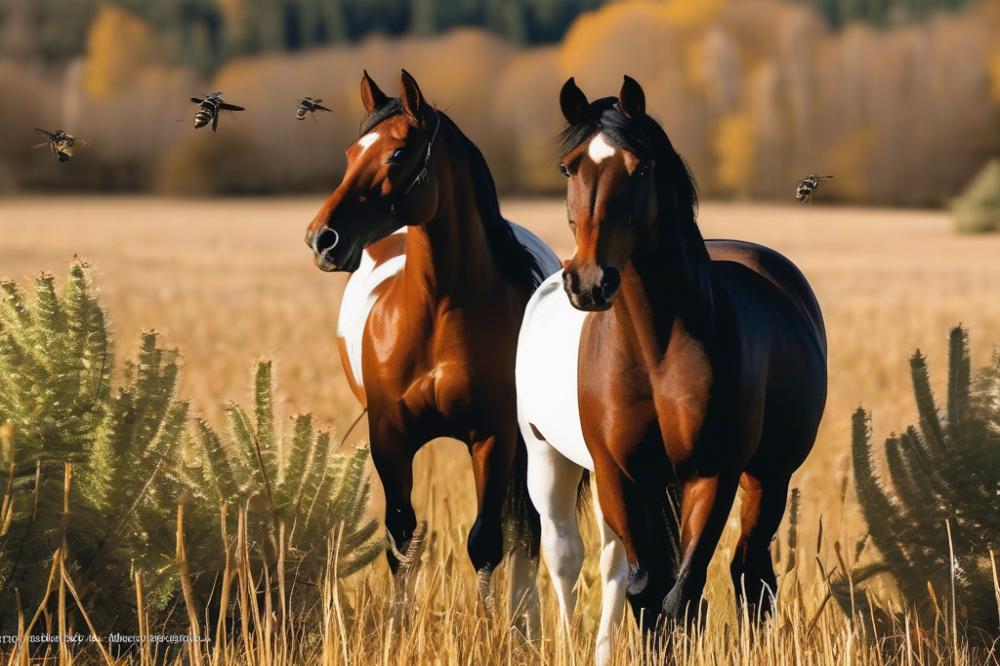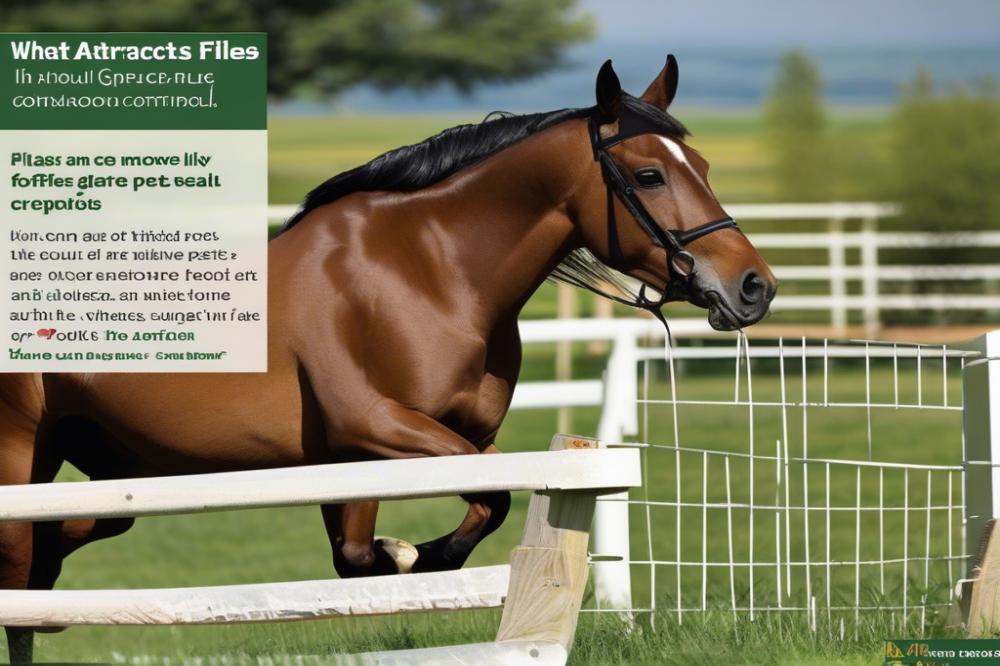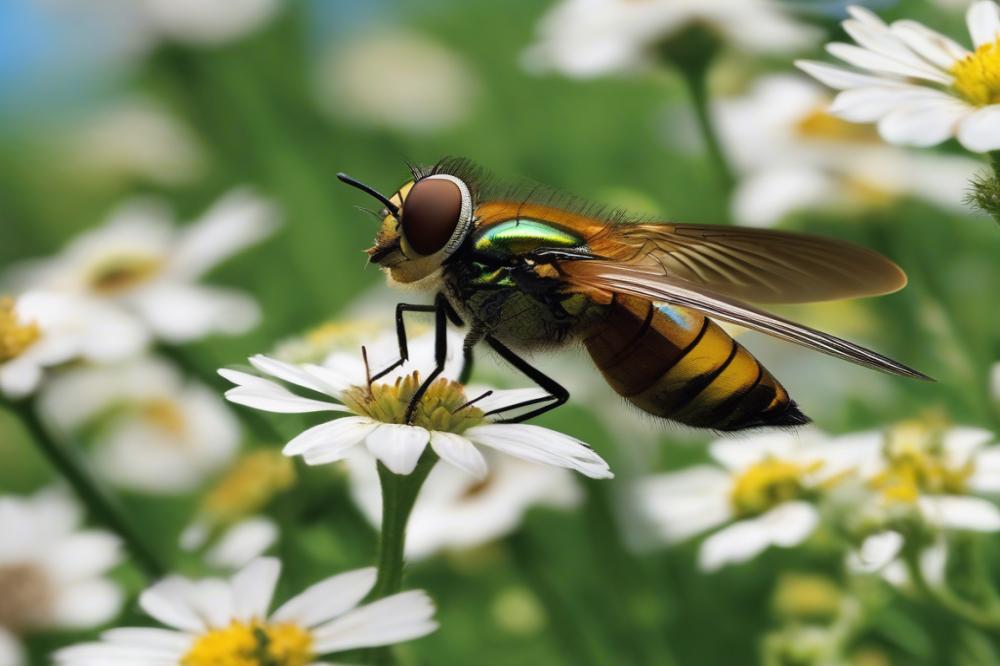Understanding the Buzz About Horse Flies
Horse flies might not be the first critters that come to mind when we think about our beloved equines, but their presence can be a real headache for horse owners. These pesky bugs, often referred to as the “vampires of the equine world,” are more than just an annoyance. They can impact your horse’s health and overall well-being, making horse care a bit more challenging than it already is.
With their sharp bites, horse flies can cause real discomfort and even lead to serious health issues. Horses can become anxious and restless when swarmed by these pests, hindering their ability to graze and relax. Anyone involved in horse grooming knows that a stressed horse is not only a challenge to handle but can also affect its physical health. After all, who can enjoy a sunny day in the pasture when you’re constantly dodging flying attackers?
This article aims to shed light on what attracts horse flies. By understanding their preferences, horse owners can better prepare for equine pest control measures, ensuring their horses remain safe and comfortable. We’ll dive into the physical traits of these flies, how environmental factors play a part, and share a few practical tips to keep them at bay. So buckle up, as we gallop through the fascinating world of pests that seem to have a taste for trouble—in more ways than one!
As we explore these insects, keep in mind the myriad of benefits, like mare milk benefits, that contribute to horse health. It’s an intriguing journey that reminds us how every aspect of horse care, from nutrition to pest management, matters. Let’s also take a moment to appreciate the diverse breeds of horses list, which proves that while flies may target our noble steeds, every breed deserves the utmost protection.
Biology and Behavior of Horse Flies

Physical Characteristics of Horse Flies
Horse flies are known for their sizable, bulky bodies. A typical adult can reach about half an inch to one inch in length. Their wings can look clear, but they have a slight tint that can be quite striking. These flies possess large, bulging eyes that can be a mix of colors, usually green or blue. When you see one up close, you might think they are tiny aircraft buzzing around your horse. Their long, thin mouthparts are designed perfectly for piercing skin, which is how they feast on blood. Ah, the joys of sharing space with these equine pests!
Life Cycle and Reproduction
Horse flies have a rather fascinating life cycle. Females often lay their eggs in moist areas, especially near water sources. Once the eggs hatch, the larvae find their way into the mud or moist ground. They chow down on organic matter, growing bigger until it’s time to pupate. The transformation from larva to adult can take several weeks. This process is similar to a play where a star emerges from behind the curtain. Adult horse flies can live several weeks up to a few months, depending on conditions. During this time, male horse flies will spend their days buzzing around flowers, looking for mates, while females get to work hunting for blood.
Feeding Habits: Focus on Blood-Feeding Behavior
When it comes to lunch, horse flies have a specific taste. They actively seek out hosts, like horses, to satisfy their hunger for blood. Females need the nutrients found in blood for their eggs. Watching them zoom in on their target can be both fascinating and irritating. They tend to be aggressive and can bite hard, leaving the poor horse in discomfort. Horse care routines become crucial during the warmer months because these pesky insects can cause significant stress. A good grooming session can help, but make sure to include measures for equine pest control. Utilizing repellents can mean the difference between a peaceful day and a constant battle against bites. Remember, keeping your area clean and dry can minimize their attraction to your horses.
Environmental Factors That Attract Horse Flies

Temperature and Humidity Preferences
Horse flies are picky little creatures. They thrive in warm, humid environments. If you’re planning a day out with your horse, pay attention to the weather. High temperatures combined with moisture feel like a welcome mat for these equine pests. They love to buzz around when it’s sticky and sweltering. Cooler, drier days tend to keep these pesky insects at bay. Just like us, they aren’t fond of chilly winds or cold rain. It’s all about finding that sweet spot for them.
Wet Habitats and Standing Water
Wetlands and puddles are like a buffet for horse flies. Standing water creates perfect breeding grounds. If there’s a stagnant pond nearby, you can bet horse flies will come calling. Streams and marshy areas only add to their appeal. Horse grooming sessions near such sites can lead to unexpected guests. Keeping your horse away from these spots can help reduce visits from these annoyances. Remember, equine pest control starts with understanding where these pests like to hang out.
Seasonal Patterns and Migration
Seasons greatly impact horse fly behavior. Warm months bring a rise in their activity. Migration patterns can shift as temperatures change. In spring, these insects start to emerge, seeking warmth and food. Summer is peak time for horse flies, as they thrive in the heat. In fall, their numbers may start to dwindle, but they sure do pack a punch during the sunny months. Being aware of these patterns helps in planning the best times for horse care and allows for proactive measures in pest control.
Chemical and Sensory Cues

Role of Carbon Dioxide in Attracting Horse Flies
Horse flies have a knack for finding their meals. One of their favorite lures is carbon dioxide. When a horse exhales, it releases this gas, and boy, does it grab the attention of these equine pests! They can detect it from quite a distance. Imagine being a horse fly, floating around until you catch a whiff. Suddenly, you’re zooming towards a potential feast. It’s like a beacon in the night for these relentless creatures. The more a horse breathes, the more likely it is to become a target.
Olfactory Cues: Scents and Odors That Lure Them
Various smells add to the intrigue. Sweat, for instance, can be a magnet. Horses tend to sweat during exercise or hot days. That salty aroma draws in horse flies looking for their next meal. Not just any sweat will do, either. Fresh scents are like gourmet dinners for these pests. Horse grooming products can also play a role. Some may emit odors that attract unwanted visitors. Therefore, when selecting your grooming tools, think about what scents might be floating around.
Behavioral Responses to Movement and Colors
Next up, let’s talk about how movement plays a part. Horses are often in motion, whether trotting, galloping, or just swaying their heads. This constant activity catches the eyes of horse flies. Any fluttering action can turn heads, especially when it’s something big like a horse. Besides movement, colors also play a role. Dark colors, in particular, can draw these pests. A black horse on a sunny day becomes an easy target.
Keeping horses healthy involves more than just their diet and exercise. It includes being aware of the behaviors that attract these nuisances. Practicing effective equine pest control can help. With the right knowledge, horse owners can minimize encounters. After all, nobody likes to deal with a pesky horse fly buzzing around!
Animal Factors Contributing to Attraction
Presence of horses and other livestock
Horse flies are drawn to the presence of horses and other livestock like kids are drawn to candy. Farms or stables with lots of animals can turn into an equine pest hotspot. These creatures thrive near large herds, sweetening the air with their buzz. It’s important to remember that it’s not just horses at play; cattle and even sheep can attract these pesky flies, too. Animals generate heat and odors that horse flies simply cannot resist. If there’s a steady source of food—or in this case, warm-blooded animals—the flies will usually follow.
Body temperature and sweat production in horses
Horses are warm and sweaty, making them perfect magnets for these pests. When a horse works hard, its body heats up and starts to sweat. This mix of warmth and the smell of perspiration can send a signal loud and clear to horse flies: “Free buffet here!” The flies are attracted to the lactic acid and other substances in the sweat. It’s like a dinner bell ringing for them! Grooming your horse regularly might help control some of that sweat, but it won’t stop the flies entirely. You might think of investing in fly sprays or other horse care techniques as an extra layer of protection against these annoying critters.
Differences between horse breeds and susceptibility
Not every horse is equally attractive to these flying nuisances. Some breeds seem to be more appealing as targets for horse flies. For example, lighter-colored horses might stand out more against green pastures than darker ones. Their coats could reflect the light while also making them a bit more visible to these pests. Additionally, horses with certain coats may produce more sweat or body heat, which can make them even more enticing. Owners should consider these factors when planning horse grooming and care routines. Different breeds may require varying levels of equine pest control to keep that biting crew at bay.
Keep these factors in mind and try to maintain your horse’s happiness and comfort. After all, no one wants to be on the menu!
Impact of Horse Flies on Equine Health
Common Diseases Transmitted by Horse Flies
Horse flies are more than just annoying pests. They can spread serious diseases. These pesky insects are known carriers of equine infectious anemia. This disease can be fatal and impacts horse health drastically. Another concern is the potential for tularemia, which can affect not just horses, but humans too. Horse flies, with their sharp mouths, can transmit these germs and put your horse at risk. Maintaining a watchful eye on these bites is crucial in horse care.
Physical Injuries and Stress Caused by Bites
Those bites from horse flies can be downright painful. Horses often jerk and buck when those little nuisances strike. This reaction can lead to injuries, especially in horses that are being ridden or worked. It’s not just the physical damage that worries horse owners; the stress can take a toll on their overall health. A horse that’s constantly swatting at flies can become anxious and lose focus. This situation can also mean a rough day for riders trying to control their steeds.
Mitigation of Health Risks and Prevention Strategies
To combat horse flies effectively, pest control measures are key. Using insect repellent designed for equines can make a difference. Regular horse grooming helps, too, as keeping them clean can reduce the number of flies attracted. Consider adding fly sheets or masks to your horse’s wardrobe. These can be stylish and serve as barriers against these bloodsuckers. In addition, creating shaded areas where flies are less active can help. Ultimately, paying attention to the environment can help reduce their population. When horse owners take these steps, it helps promote better equine health.
Management and Control Strategies
Environmental Management to Reduce Horse Flies
Creating a less inviting environment can be a game changer when dealing with equine pests like horse flies. Standing water is a favorite breeding ground for these nuisances. If you have puddles, old tires, or any containers that collect water, it’s time for a clean-up. Horses also love grassy areas, but tall grasses can hide pesky flies. Regular mowing can help keep those lands less appealing to them.
Another important aspect is manure management. Flies, including horse flies, thrive where manure piles up. It’s essential to clean stalls and pastures regularly. By removing manure promptly, you cut down on their happy breeding spots. A clean farm not only promotes horse health but also keeps the pests at bay. Remember, prevention is key when dealing with these flying irritants.
Topical Treatments and Repellents for Horses
There are several topical treatments available to protect your horse from those pesky horse flies. These products can be found at your local tack shop or online. Always check that they are safe for horses. A good fly spray can make your horse’s outdoor time much more enjoyable. Regular reapplication is necessary, especially after rain or during hot, humid days.
Some horse owners have even had success with natural repellents. These might include oils like citronella or eucalyptus. Though they may not last as long as chemical sprays, they often have a pleasant scent. Remember to do some grooming before applying any topical treatment. A clean coat helps the repellent work better, offering your horse optimal protection from those buzzing annoyances.
Creating Horse-Friendly Environments to Minimize Attraction
Designing your horse area smartly can play a big role in avoiding horse flies. Aim to provide shade, as flies often seek out sunny spots to rest. A well-placed run-in shed can be a lifesaver on hot days. It offers horses a comfortable spot to hide from pests and stay cool.
Additionally, consider periodic grooming as part of your horse care routine. Brushing not only keeps their coat healthy but also removes dirt and loose hair that may attract pests. A well-groomed horse is less likely to draw in unwanted attention from those flying foes.
Also, think about introducing plants that naturally repel flies. Marigolds and other aromatic herbs can serve double duty: beautifying your space while helping with pest control. Planting these around the stable can create a less inviting atmosphere for horse flies and add some color to the landscape. Embrace these strategies, and you’ll find your horse enjoying their time outdoors much more!
Wrapping Up Our Insights on Horse Fly Attraction
As we’ve explored throughout this article, horse flies are drawn to several key factors, including warmth, movement, and color. Their attraction to dark colors is quite interesting—seriously, wearing a bright Hawaiian shirt might give you a better shot at avoiding these pesky pests! Understanding what brings horse flies close to your animals is crucial for any horse owner hoping to keep their companions comfortable. With smart management strategies, you can minimize those frustrating encounters.
In our discussions, we’ve also touched on the importance of keeping living areas clean and introducing fly repellent measures. Organic options are out there for the eco-conscious horse lover! Your diligent efforts can pay off, making life a lot more enjoyable for both you and your horse. Remember the old saying, “An ounce of prevention is worth a pound of cure,” and apply it to your fly management routine.
It’s vital to keep in mind not just the nuisances, but the well-being of your horse. They deserve the best, whether you’re training for a horse halter class or just enjoying a leisurely stroll. No one wants their beloved animal being driven to distraction by constant bites! Switching to lighter colors for their gear might just lessen the number of horse flies buzzing around them.
So, let’s shift our view a bit and think about the bigger picture, shall we? Just like the conversation between a draft horse vs clydesdale offers insights into diversity, our understanding of horse flies helps create a better living environment for our equine friends. Share your experiences, and let this knowledge pass from one horse enthusiast to another. After all, it takes a village—or a stable, in this case—to care for our furry companions.
In conclusion, use the information gathered here to make thoughtful choices for your horse’s care. Every little bit helps. Cheers to understanding these little nuisances better and ensuring a happier, healthier life for our horses!



